Abstract
Etiolated tissues of several plants are multiple bundles of fiber optics capable of coherent transfer of light over at least 20 mm. The acceptance angles (the angles at which light can be intercepted and then internally reflected longitudinally) for mung beans, oats, and corn are 47°, 59°, and 52°-54°, respectively. The shapes of the curves that describe the acceptance angles are the same for various tissues of the same plant but differ between species. The pattern of light transmitted longitudinally through a tissue is dependent on the angle at which the light intercepts the side of the tissue and is strongly influenced by the tissue geometry. When 0.5 mm of the tip is irradiated, the amount of light traveling down the “shaded” side of the coleoptile is equal to or 2- to 3-fold greater than the amount traveling down the “lighted” side.
Keywords: internal reflectance, light-guiding, acceptance angle, photomorphogenesis, phototropism
Full text
PDF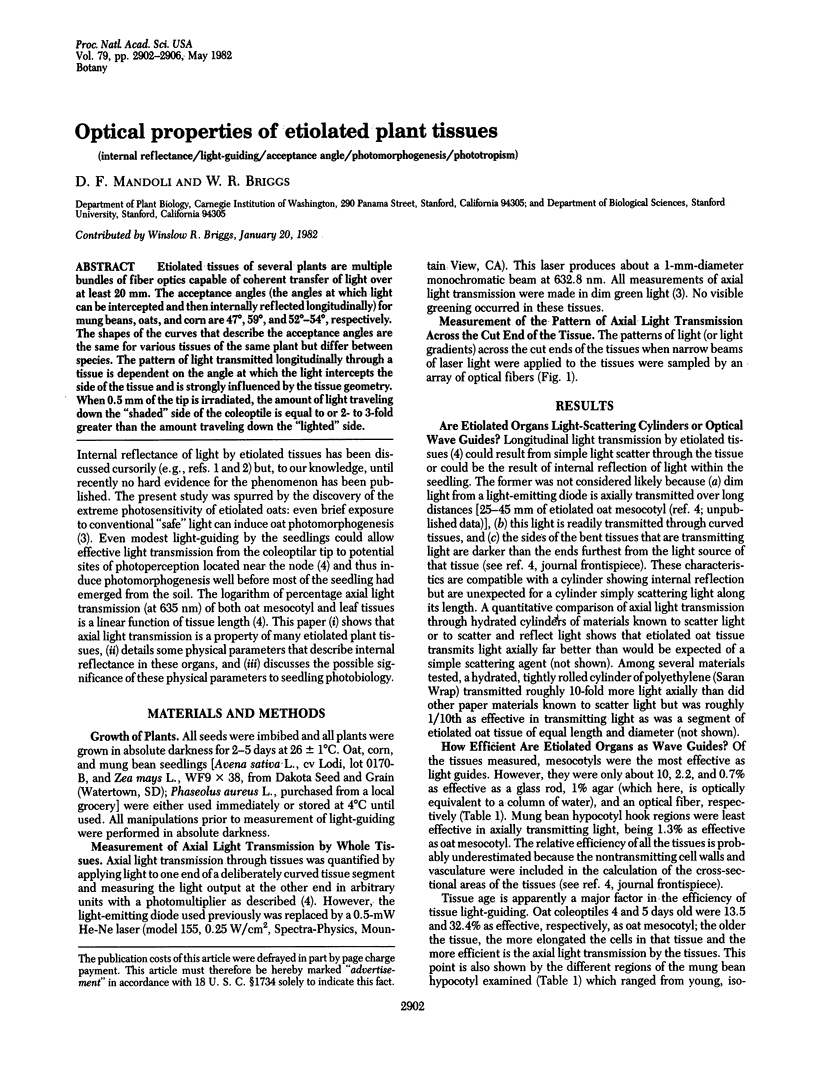
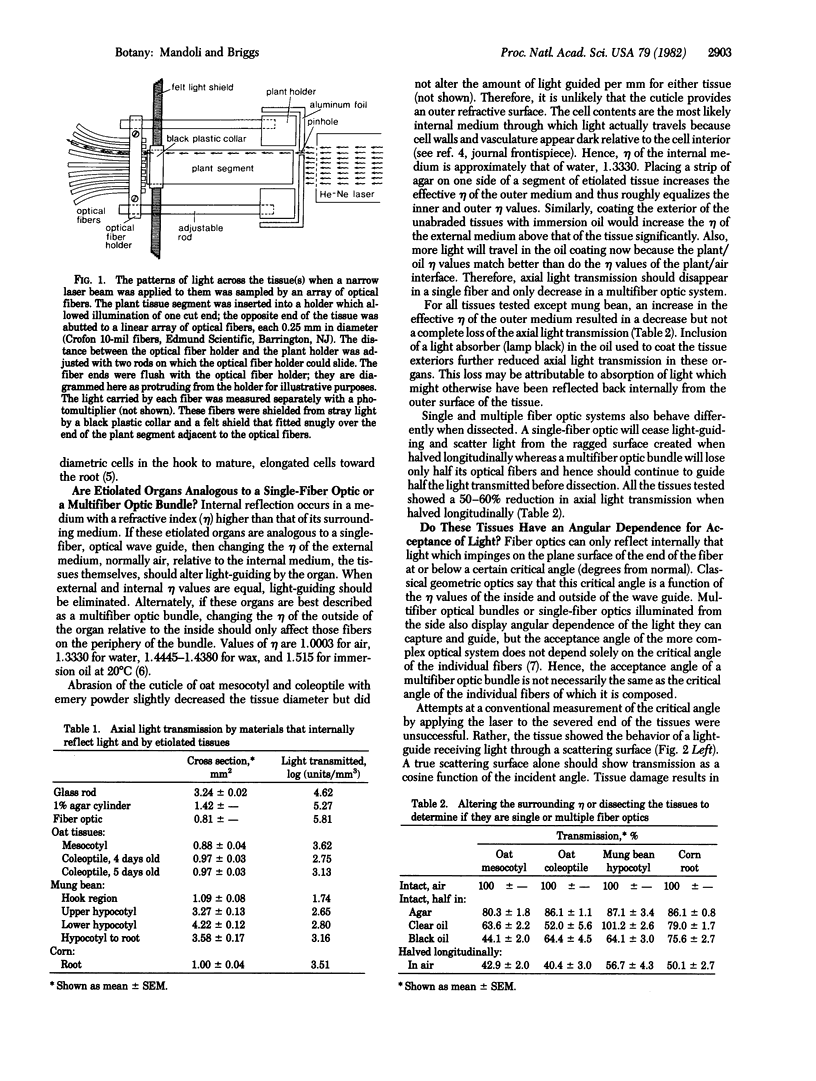
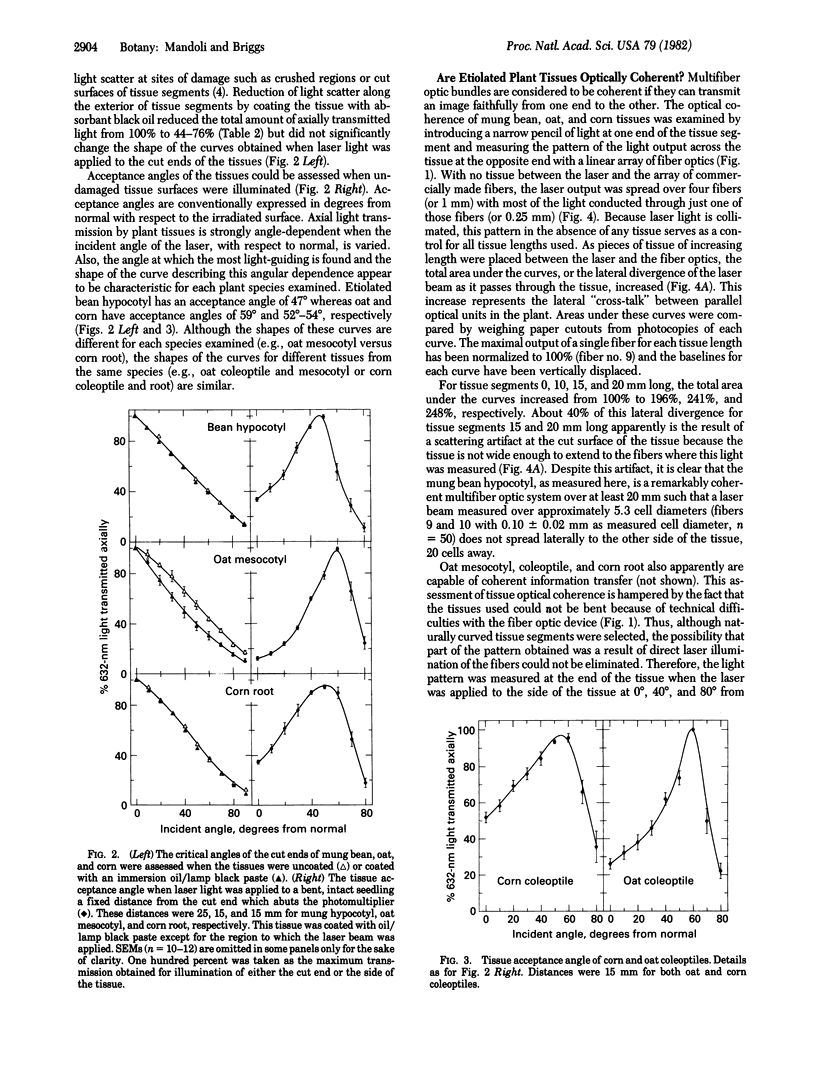
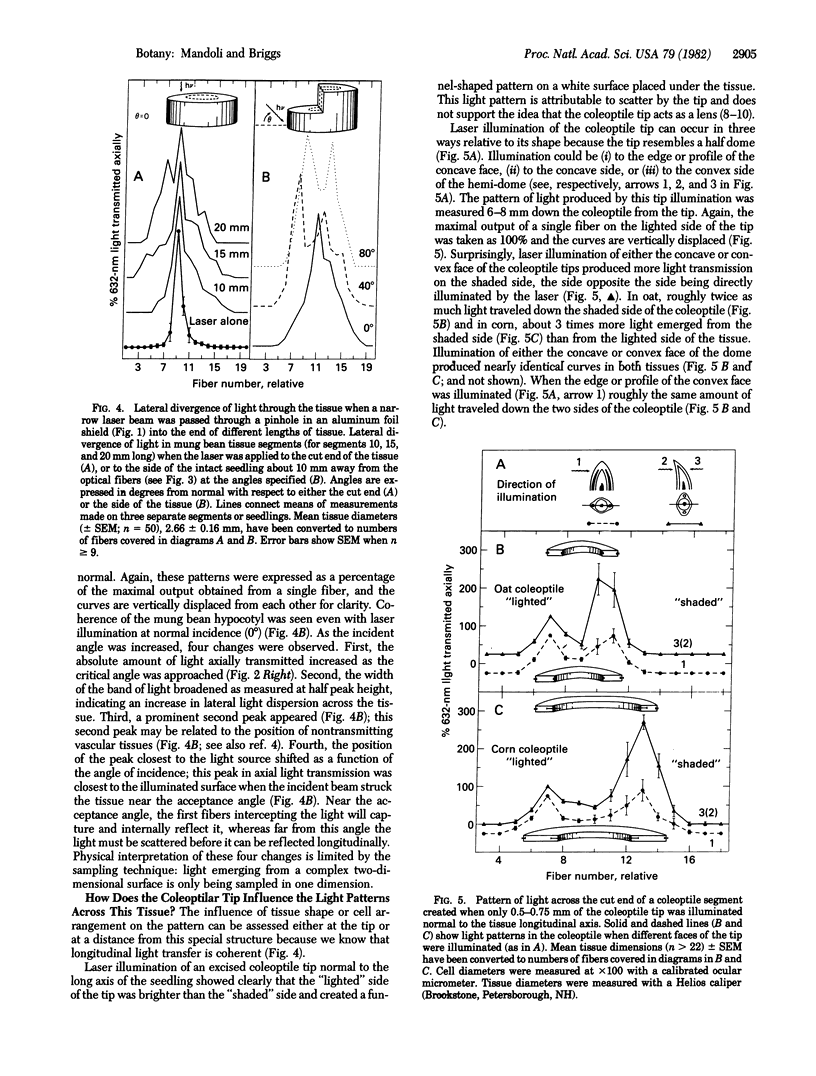
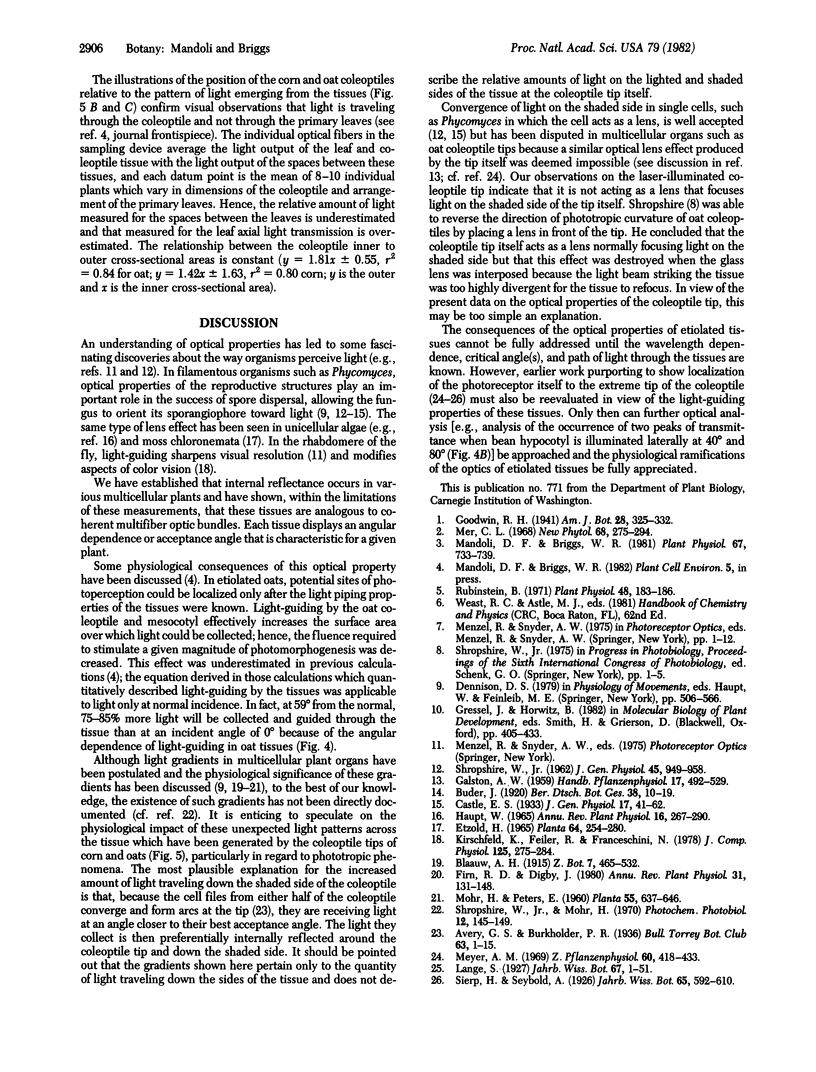
Images in this article
Selected References
These references are in PubMed. This may not be the complete list of references from this article.
- Mandoli D. F., Briggs W. R. Phytochrome control of two low-irradiance responses in etiolated oat seedlings. Plant Physiol. 1981 Apr;67(4):733–739. doi: 10.1104/pp.67.4.733. [DOI] [PMC free article] [PubMed] [Google Scholar]
- Rubinstein B. The Role of Various Regions of the Bean Hypocotyl on Red Light-induced Hook Opening. Plant Physiol. 1971 Aug;48(2):183–186. doi: 10.1104/pp.48.2.183. [DOI] [PMC free article] [PubMed] [Google Scholar]
- Shropshire W., Jr, Mohr H. Gradient formation of anthocyanin in seedlings of Fagopyrum and Sinapis unilaterally exposed to red and far-red light. Photochem Photobiol. 1970 Aug;12(2):145–149. doi: 10.1111/j.1751-1097.1970.tb06046.x. [DOI] [PubMed] [Google Scholar]



